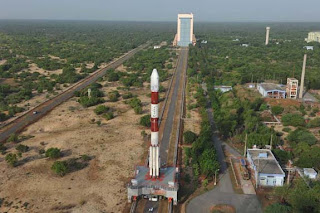NASA handout image dated February 2011 shows a swirling landscape of stars known as the North America Nebula. In visible light, the region resembles North America, but in this image infrared view from NASA's Spitzer Space Telescope, the continent disappears. The reason you don't see it in Spitzer's view has to do, in part, with the fact that infrared light can penetrate dust whereas visible light cannot. Dusty, dark clouds in the visible image become transparent in Spitzer's view. In addition, Spitzer's infrared detectors pick up the glow of dusty cocoons enveloping baby stars
This infrared image from NASA's Wide-field Infrared Survey Explorer (WISE) showcases the Tadpole Nebula, a star-forming hub in the Auriga constellation about 12,000 light-years from Earth. As WISE scanned the sky, capturing this mosaic of stitched-together frames, it caught an asteroid in our solar system passing by. The asteroid, called 1719 Jens, left tracks across the image. A second asteroid was also observed cruising by. REUTERS/NASA/JPL-Caltech/UCLA/Handout
This image provided by NASA Thursday Dec. 9, 2010 shows this oddly colorful nebula which is the supernova remnant IC 443 as seen by NASA's Wide-field Infrared Survey Explorer, or WISE. Also known as the Jellyfish nebula,
This handout composite image by NASA/ESA from the Hubble telescope, taken between February 1-2, 2010 and obtained on April 23, 2010 shows an image of a pillar of star birth, three light-years high, depicting how scorching radiation and fast winds (streams of charged particles) from super-hot newborn stars in the nebula are shaping and compressing the pillar, causing new stars to form within it.
This NASA handout image received 28 August 2007 shows a newly expanded image of the Helix nebula on the the fourth anniversary of the launch of NASA's Spitzer Space Telescope.
-a large galaxy with a well defined spiral structure also cataloged as NGC 5194. Over 60,000 light-years across, M51's spiral arms and dust lanes clearly sweep in front of its companion galaxy, NGC 5195.
This glowing emerald nebula seen by NASA's Spitzer Space Telescope is named RCW 120; it is about 4,300 light-years away in the tail of the constellation Scorpius. The false-color image was created by assigning brilliant colors to wavelengths that are usually invisible to the human eye.
This infrared image from NASA's Spitzer Space Telescope shows the Helix nebula,
A photo provided by NASA shows a Spitzer Space Telescope view of the North American nebula in the visiible light spectrum. The shape of North America is a result of clouds of dust obscuring light.
The tiny, three-mile-wide (four-kilometer-wide) moon Pallene hangs in front of mighty Saturn in a raw picture
The bright, greenish star on the right is Pi Scorpii, which marks one of the claws of the scorpion in the constellation Scorpius
This WISE image shows off the flower-shaped nebula, NGC 2237, also known as the rosette nebula. The nebula is a massive, star-forming cloud of gas and dust located within the constellation Monoceres, or the Unicorn
This WISE images shows IC 443, also known as the jellyfish nebula, which is located 5,000 light-years away from Earth inside the Gemini constellation. About 5,000 to 10,000 years ago, a massive star at the center exploded, forming a jellyfish-shaped shell around its remains.
WISE captures the vast, star-forming heart and soul nebulae, located 6,000 light-years from Earth. Spanning nearly 580 light-years across, the soul nebula, also known as the embryo nebula, is located on the left and the heart nebula is located on the right.
the two round greenish nebulae are actually cavities carved out of the surrounding dark dust clouds. The extended dust is mostly dark, even to Spitzer's view, but the edges show up in mid-wavelength infrared light as glowing, red frames surrounding the bright interiors.



























